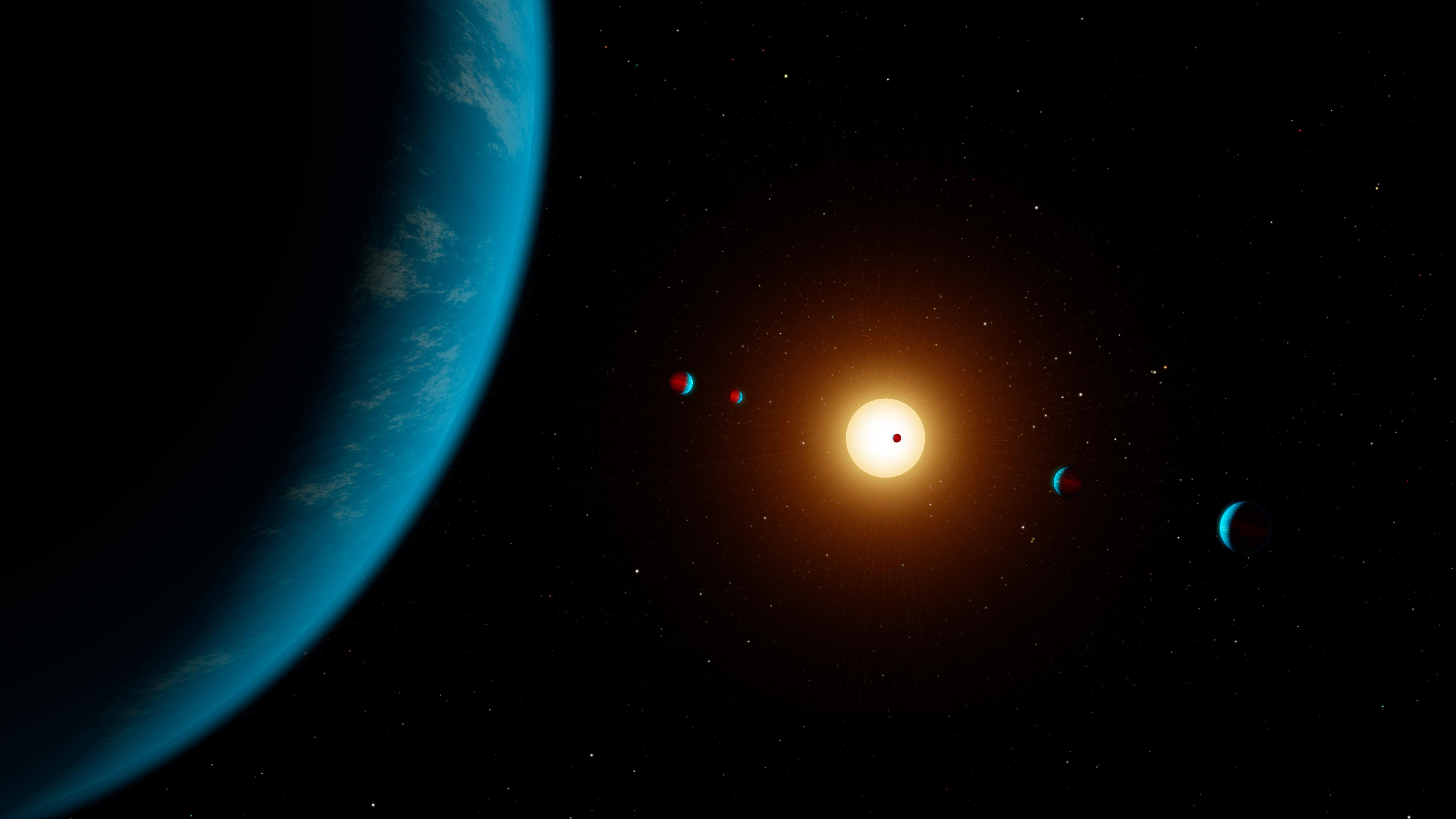AI discovers over 300 unknown exoplanets in Kepler telescope data
The AI algorithm is more efficient in distinguishing false positives from the real stuff than human experts.

A new artificial intelligence algorithm has discovered over 300 previously unknown exoplanets in data gathered by a now-defunct exoplanet-hunting telescope.
The Kepler Space Telescope, NASA's first dedicated exoplanet hunter, has observed hundreds of thousands of stars in the search for potentially habitable worlds outside our solar system. The calatog of potential planets it had compiled continues generating new discoveries even after the telescope's demise. Human experts analyze the data for signs of exoplanets. But a new algorithm called ExoMiner can now mimic that procedure and scour the catalog faster and more efficiently.
The telescope, which stopped working in November 2018, looked for temporary decreases in the brightness of the stars that might be caused by a planet crossing in front of the star's disk as seen from Kepler's perspective. But not all such dimmings are caused by exoplanets, and scientists had to follow elaborate procedures to distinguish false positives from the real stuff, according to a NASA statement.
Related: These 10 super extreme exoplanets are out of this world
ExoMiner, is a so-called neural network, a type of artificial intelligence algorithm that can learn and improve its abilities when fed a sufficient amount of data. And Kepler generated plenty of data: In the less than 10 years of its service, the telescope discovered thousands of planet candidates, nearly 3,000 of which have since been confirmed. That is a vast majority of the overall 4,569 exoplanets currently known.
For each candidate exoplanet, scientists poring through the Kepler data would look at the light curve and calculate how large a portion of the star the planet seems to be covering. They would also analyze how long it appears to take the would-be planet to cross the star's disk. In some cases, the observed brightness changes are not likely to be explained by an orbiting exoplanet. The ExoMiner algorithm follows exactly the same process but more efficiently, which allowed the researchers to add a batch of 301 previously unknown exoplanets into the Kepler planet catalog at once.
"When ExoMiner says something is a planet, you can be sure it's a planet," Hamed Valizadegan, ExoMiner project lead and machine learning manager with the Universities Space Research Association at the NASA Ames Research Center, said in the statement. "ExoMiner is highly accurate and in some ways more reliable than both existing machine classifiers and the human experts it's meant to emulate because of the biases that come with human labeling."
Get the Space.com Newsletter
Breaking space news, the latest updates on rocket launches, skywatching events and more!
Now that ExoMiner proved its skills, scientists are looking to use it to help sift through data from other existing and upcoming exoplanet-searching missions, such as NASA's current Transiting Exoplanet Survey Satellite (TESS) or the European Space Agency's Planetary Transits and Oscillations of Stars (PLATO) mission that will launch in 2026.
Unfortunately, none of the newly confirmed exoplanets are likely candidates to host life, as they are outside of the habitable zones of their parent stars.
The paper was accepted for publication in the Astrophysical Journal, NASA said in the statement; a draft of the paper is available to read on the preprint site arXiv.org.
Follow Tereza Pultarova on Twitter at @TerezaPultarova. Follow us on Twitter @Spacedotcom and on Facebook.
Join our Space Forums to keep talking space on the latest missions, night sky and more! And if you have a news tip, correction or comment, let us know at: community@space.com.

Tereza is a London-based science and technology journalist, aspiring fiction writer and amateur gymnast. Originally from Prague, the Czech Republic, she spent the first seven years of her career working as a reporter, script-writer and presenter for various TV programmes of the Czech Public Service Television. She later took a career break to pursue further education and added a Master's in Science from the International Space University, France, to her Bachelor's in Journalism and Master's in Cultural Anthropology from Prague's Charles University. She worked as a reporter at the Engineering and Technology magazine, freelanced for a range of publications including Live Science, Space.com, Professional Engineering, Via Satellite and Space News and served as a maternity cover science editor at the European Space Agency.









